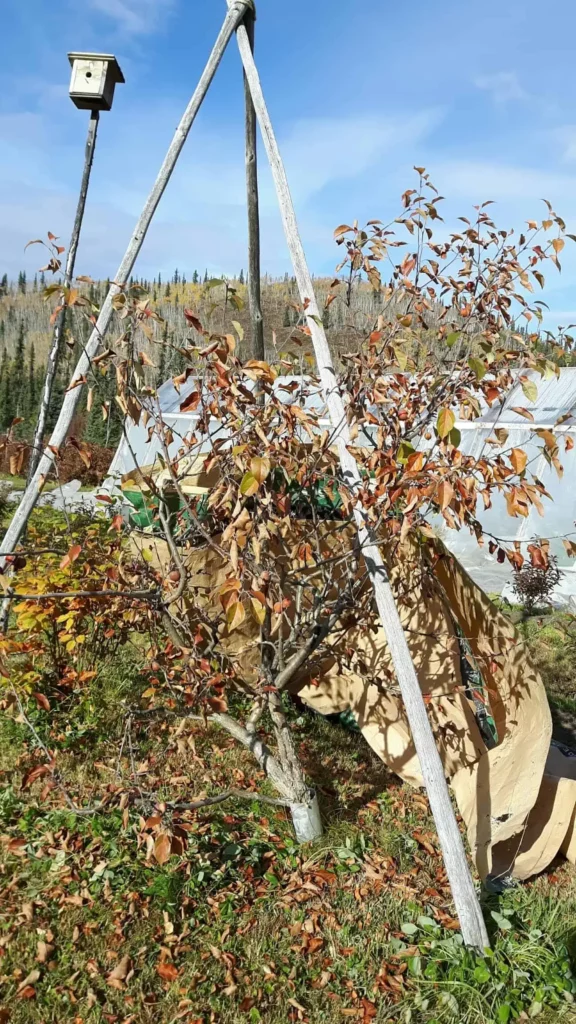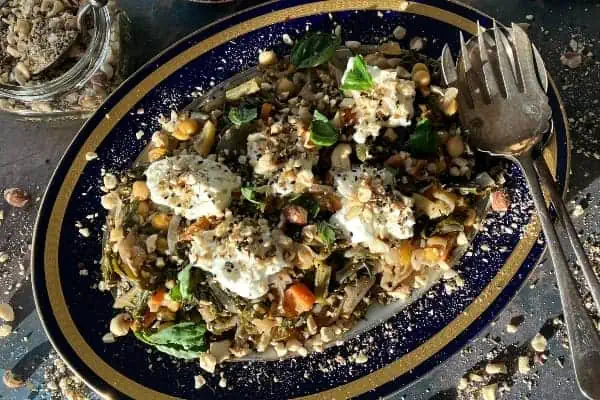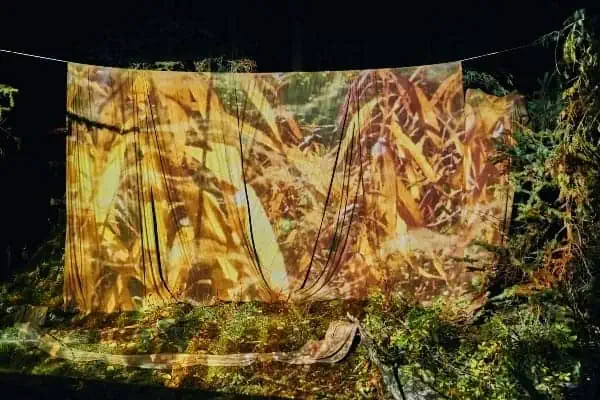
I feel tumbled up against the advance of winter. All summer, the sun pulled me on with the force of a tearaway sled dog and, when the days shortened into fall, it was as if she slowed suddenly to sniff out a piece of news and I hurtled into her. I sit on the trail and blink. It would appear that winter comes.
I often wonder what trees feel in response to the lengthening and shortening of days … if the tug that draws up the sap in spring is felt throughout the tree like the laughter that rises to my lips in early spring. Why not? They are just as complex assemblages of molecules as we are. Whether or not it is the case, I cannot help but imagine they feel a similar contented exhaustion as I do while I move from tree to tree, conducting the winter preparations.
Twigs, trunks, buds, roots and limbs react to warming and cooling at different rates and are exposed to these stresses to varying degrees. Roots of ground-grown trees, for example, are well insulated by soil, leaves and snow. Potted or containerized trees are more vulnerable and fare better heeled in (their pots buried into the ground) for the winter.
Flower buds are more sensitive to cold than twigs and limbs, and the most cold-hardy flower buds are ones that form early on short twigs or stubby clusters (spurs), rather than on longer branches, which takes additional weeks to develop on. Fruit trees differ a great deal in their propensity to grow short fruiting branches, and we look for this characteristic when choosing fruit trees, especially for cold places. Trunks on older trees that have been bearing fruit are most resilient to cold and drought, like elders and grandparents that have seen and coped with many good and difficult years, while young bark is more easily damaged.
The basic protection we offer our apple trees consists of three or four poles thrust into the ground at an angle such that, when the tips cross, they slope to at least 20 degrees from the vertical (we have found this is best for allowing snow to accumulate for added warmth), forming a frame for a tarp wrap. It is much easier to drive the poles before the ground freezes! It’s good practice to shovel a bit of snow around the base of the tree, to give the roots some extra insulation before wrapping the tree.
Another critical bit we do is to install a rodent collar—a sturdy cylinder (plastic or metal) that wraps the trunk for the first six to 10 inches to prevent rodents from finding the succulent bark of the tree, in the first place, and eating it, derailing the trees progress. Options include thin aluminum, solid weedwhacker protectors, PVC Pipe or even tall tin cans. While it is true that the little critters can climb and eat the bark of the entire tree, recovery is possible as long as the lower portion of the tree is protected from the ground to above the graft line. With a strong root system, recovery can be rapid.
The tree cover/wrap should be closed off at the top (tied, stapled or whatever) and snug to the ground. We suggest a solid, light-coloured tarp (like a building tarp) instead of a clear plastic one, to prevent your shelter from becoming a greenhouse in February and to give your tree the illusion of spring on a bright winter day. If, like us, you pass much of the winter with no sunshine at all, this is less relevant. Black, of course, would heat up in the sun if the exposure is lengthy—also undesirable.
Covering the tree completely has the added bonus of making it less likely to be browsed by moose, peed on by pooches (a killer in the winter for small trees) or run into with the dogsled. Hopefully. If you are blessed with a temperate yard or are keen to see just how tough your tree is doing without a shelter, the rodent protection is still a very good idea as the wee varmints have free range beneath the snowpack for many months.
Further pampering is optional: we speak to the trees and wish them luck as we wrap them up or bury their pots and set their collars. I don’t know if it helps them, or just helps us, but it feels good. We spend so much time with them during the summer that it feels strange to be tucking them out of sight for the “long night” to come. A few words of farewell are only natural. We trust that if we do our job, they will sleep well and feel better for it come spring. Come to think of it, the tucking in of trees has become part of my early winter rites—my own slowing down—my way of coming into alignment with the pace of winter. Thinking of it that way, I don’t mind going about it a bit more quietly, and even look forward to picking away at the last of such chores before the snow comes in earnest.




